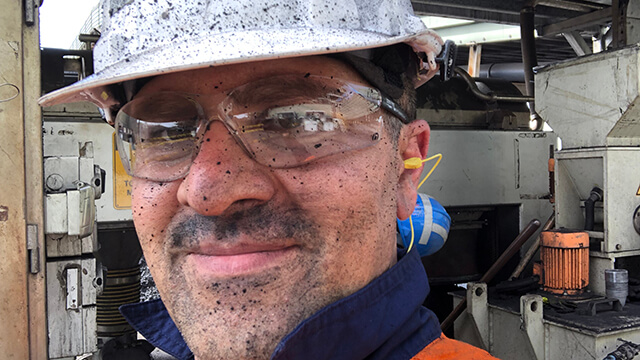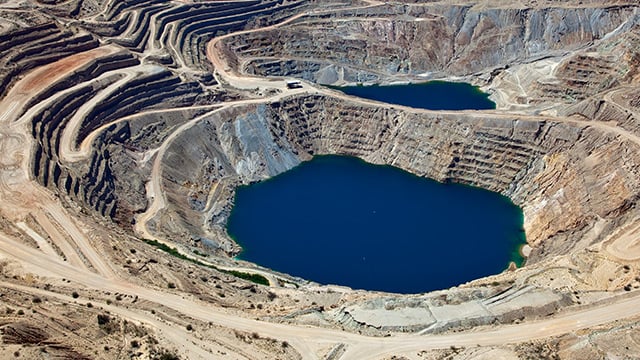Tailings
Tailings management is changing. Alfa Laval is working with customers around the world to move to tailings dewatering and dry stacking. The robust design and large capacity of our solid-bowl decanter centrifuges have proven the perfect solution for safe and secure dewatering of mine tailings. The small footprint substantially reduces installation space. The consistency of the solids fraction is perfect for co-disposal or dry stacking. And you recover large volumes of water for reuse.
Ensuring a fast, continuous process for safe, clean and efficient solid-liquid separation
- High capacity and separation efficiency with optimal solids dryness
- Long working life
- Designed for high-density sludge
- Compact design and small installation area
- Easy to scale-up capacities from test results
The proven design and performance of Alfa Laval solid bowl centrifuges are based on decades of research and development in challenging solid-liquid separation applications. In Australia, the technology is used for coal, copper, iron ore, gold, nickel and uranium tailings. The unique bowl geometries, exceptional solids handling rates and robust design combine to set new standards in mining tailings management. Alfa Laval solid bowl centrifuges are wear-resistant, made with high-grade materials to withstand harsh environment of erosion and corrosion. Its 1000mm machines offer with very large capacity, up to 60 dry tonnes per hour, specifically designed for heavy duties in mining and mineral processing.
Get a quote or find out more about our solid bowl centrifuge trial unit
A centrifuge trial allows to you determine parameters such as:
- Moisture in the cake
- Centrate clarity
- Determine scalable capacity
- Detailed assessment how this technology can work in practice for your specific facility
Eliminate tailings risk with solid bowl centrifuge technology
Safe and sustainable tailings management is more important than ever as the global output of tailings continues to grow, driven by demand for minerals. Solid bowl centrifuge technology is a superior dewatering solution compared with filtration technologies such as belt and frame filter presses.
Tailings dewatering - Frequently Asked Questions
What is tailings management?
Many mining and mineral processes require washing the ore to remove impurities. The resulting wastewater and slurries are traditionally stored in tailings storage facilities or TSFs. With depleting ore reserves the quantity of tailings generated is increasing, as miners try to fulfill global demand for minerals. As the practice of wet tailings entails major risks, and new TSF licenses are harder to obtain, the industry is seeking alternatives including tailings dewatering to ensure safe and sustainable tailings management.
How mining companies effectively dewater tailings with solid bowl centrifuge technology
Why is the topic of tailings management receiving so much attention?
Tailings management is in the spotlight as mining companies are balancing growing demand for minerals with slimmer operating margins and greater calls for risk management and sustainability. Shareholder and regulatory pressure as well as social license play a role as well as environmental and cost considerations. The legacy cost of managing and closing a TSF can be substantial.
What is the recommended approach for tailings management?
The framework for tailings management considers key development pillars: technological, economic, environmental, policy and social aspects. It incorporates tools for determining trade-offs inherent in different tailings management methods during operation and throughout the life of mine which include Life Cycle Assessment (LCA), Net Present Value (NPV), Decision Analysis, and others.
The design and management of a TSF requires a multi-disciplinary approach as it involves civil and environmental engineering, geology, hydrology, geochemistry, mechanical engineering, process engineering and mine planning.
What are the most cost effective technology solutions available for tailings dewatering?
The key evaluation criteria that mining and mineral processing companies consider while selecting tailings dewatering technologies are:
- Consistency of dewatered solids – preferably dry, stackable
- Clarity of filtrate/centrate for recovery and reuse
- Sound operating economy
Solid bowl centrifuges compare favourably in all three categories.
Can mine operators move away completely from tailings storage with tailings dewatering?
As solid bowl centrifuges have evolved in capacity and throughput, the ranks of mining companies aiming to eliminate TSFs completely with full scale deployments is growing quickly.
For example Australian mining company Bloomfield is moving away from tailings storage with Alfa Laval solid bowl centrifuges. However tailings dewatering can also be an interim solution for sites where tailing dams are reaching capacity. Contact Alfa Laval Australia for more information of our full scale skid mounted SBC solution.
What are the sustainability benefits of tailings dewatering?
Water scarcity brings sustainability to the forefront and water management is also critical for maintaining community support and social license to operate. Considering the arid nature of the Australian continent, it doesn’t come as a surprise that local mining companies are well advanced when it comes to seeking more efficient ways to dewater their tailings and re-use the process water in their processing plant.
Solid bowl centrifuges allow to re-capture up to 90 per cent of the water, as the centrifuge separates the fine solids using G-forces from the contaminated process water. The solids are discharged as a cake with a low moisture content that can be dry-stacked, and used for mine rehabilitation in a similar fashion to overburden and coarse rejects.
Recycle, reuse and recover resources from tailings
Can I dewater slimy tailings with high clay content?
Slimes are sometimes a fraction of the tailings stream, combined with coarser solids, or a product of a desliming stage. The higher this fraction, the more difficult the tailings are to manage. While filtration can struggle with clay, a gravity-based method such as a thickener commonly separates out the water and solid phases with the assistance of flocculent. They create an overflow that is normally clear enough for use in the process plant, and a pumpable underflow.
How to dewater tailings slurries with slimes and ultra-fines
From the coal face
How to manage tailings storage facilities (TSF) is an ongoing challenge for Australia’s mining and minerals industry, from a risk mitigation and cost point of view. Alfa Laval Australia engineer and mining account manager, Harvey Foroush, explains how solid bowl centrifuge technology has evolved over time to provide an economically and technologically superior solution to dewater tailings and recover process water.



